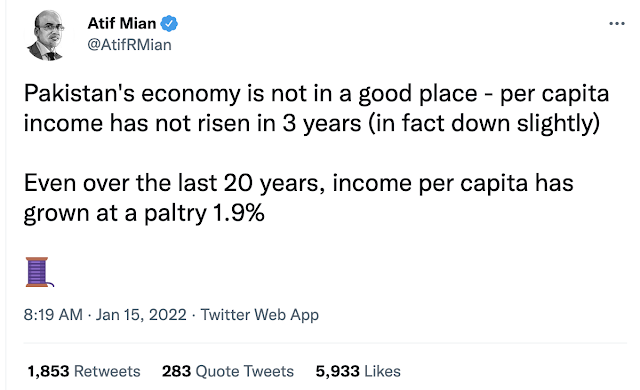In a long investigative report titled "The Battle for the World’s Most Powerful Cyberweapon" published today, the New York Times has revealed that the Indian Prime Minister Narendra Modi bought the Pegasus spyware as part of a 2017 $2 billion deal he signed with then Israeli Prime Minister Benjamin Netanyahu.
 |
| Israeli NSO Pegasus Spyware |
Here's the relevant excerpt of the New York Times report on Modi-Netanyahu deal:
"In July 2017, Narendra Modi, who won office on a platform of Hindu nationalism, became the first Indian prime minister to visit Israel. For decades, India had maintained a policy of what it called “commitment to the Palestinian cause,” and relations with Israel were frosty. The Modi visit, however, was notably cordial, complete with a carefully staged moment of him and Prime Minister Netanyahu walking together barefoot on a local beach. They had reason for the warm feelings. Their countries had agreed on the sale of a package of sophisticated weapons and intelligence gear worth roughly $2 billion — with Pegasus and a missile system as the centerpieces. Months later, Netanyahu made a rare state visit to India. And in June 2019, India voted in support of Israel at the U.N.’s Economic and Social Council to deny observer status to a Palestinian human rights organization, a first for the nation".
Mr. Modi has used the Israeli spyware to not only spy on his critics at home but also his perceived enemies abroad. Pakistani Prime Minister Imran Khan is among the most prominent targets of the Modi government's cyber attacks, according to a recently released Project Pegasus report. The Indian government has neither confirmed nor denied the report. The focus of the report is the use of the Israeli-made spyware by about a dozen governments to target politicians, journalists and activists. The users of the Pegasus software include governments of Bahrain, Morocco, Saudi Arabia, India, Mexico, Hungary, Azerbaijan, Togo and Rwanda.
 |
| Indian Prime Minister Modi with National Security Advisor Ajit Doval |
Modi's National Security Advisor (NSA) Ajit Doval is the man behind India's acquisition of cyberweapons like the Israeli Pegasus spyware. Indian National Security Council Secretariat (NSCS), which reports to National Security Adviser (NSA) Ajit Doval, has seen a tenfold increase in budgetary allocation, according to a Hindu newspaper story published in 2017. Prior to becoming Modi's NSA, Doval openly advocated using the Taliban terrorists against Pakistan. Recently, Doval has talked about weaponizing "the civil society" . “The new frontiers of war, what you call the fourth-generation warfare, is the civil society,” he said in November 2021. Elaborating further, he said wars have ceased to become an effective instrument for achieving political or military objectives. They are too expensive or unaffordable and, at the same time, there is uncertainty about their outcome. “But it is the civil society (NGOs) that can be subverted, suborned, divided, manipulated to hurt the interests of a nation. You are there to see they stand fully protected,” he said.
This is not the first time that Pakistan has figured prominently as India's favorite target for cyber hacks. Last year, a report in The Sunday Guardian of India said: "Mobile phones of around 30 Pakistani government servants, who include serving army generals, officials attached with the ISI and senior bureaucrats, were hacked into by using Pegasus spying software during April and May 2019".
In addition to the use of spyware, the Indian government has been engaged in a massive, long-running disinformation campaign targeting Pakistan. EU Disinfo Lab, an NGO that specializes in disinformation campaigns, has found that India is carrying out a massive 15-year-long disinformation campaign to hurt Pakistan. The key objective of the Indian campaign as reported in "Indian Chronicles" is as follows: "The creation of fake media in Brussels, Geneva and across the world and/or the repackaging and dissemination via ANI and obscure local media networks – at least in 97 countries – to multiply the repetition of online negative content about countries in conflict with India, in particular Pakistan". After the disclosure of India's anti-Pakistan propaganda campaign, Washington-based US analyst Michael Kugelman tweeted: "The scale and duration of the EU/UN-centered Indian disinformation campaign exposed by @DisinfoEU is staggering. Imagine how the world would be reacting if this were, say, a Russian or Chinese operation".
 |
| Pegasus Spyware Explained. Source: The Guardian |
Pegasus is spying software made by NSO Group, an Israeli company whose exports are regulated and controlled by the Israeli government. It uses several different messaging apps to plant itself in mobile phones. Last year, Apple issued a warning to its customers of a "zero-click" version of the Pegasus software. It does not require the phone user to click on any links or messages for the spyware to take control of the device. Once installed, it can read and export any information or extract any file from SMS messages, address books, call history, calendars, emails and internet browsing histories.
The Israeli spyware will likely inspire other software developers elsewhere to copy and improve it, contributing to a proliferation of such hacking and spying tools around the world. The governments and officials who use it to target others will eventually become targets themselves, unless the nations of the world agree to some norms of internationally accepted cyber behavior. It's high time to think about it.
PTM: Lowdown on Manzoor Pashteen
East Pakistan "Genocide" Headline
Ex Indian Spy On RAW's Successes Against Pakistan
Free Speech: Myth or Reality?
Social Media Tribalism
Social Media: Blessing or Curse For Pakistan?
Planted Stories in Media
Indian BJP Troll Farm
Kulbhushan Jadhav Caught in Balochistan
The Story of Pakistan's M8 Motorway
Riaz Haq's Youtube Channel































